The 50 States Project is a yearlong series of candid conversations with interior designers across the country about how they’ve built their businesses. This week, Boise, Idaho–based designer Judith Balis tells us how she overcame a fear of raising her rates, why she encourages prospective clients to consider other designers before signing, and how her growing retail business has created a local community.
What were your early memories of being interested in design, and when did you realize this could be a career?
I never thought it could be a career until I was actually doing it—and even then, I questioned it—but I have been designing, whether I wanted to or not, since I was very young. I was an only child raised by a single mom. We didn’t have a whole lot of money, so I always had to be creative. If I wanted to decorate my bedroom, I would go to the Salvation Army to buy sheets and make new pillows or tablecloths. I was one of those kids that would make an entire new house for my Barbie—lampshades out of mouthwash caps, or using scrap wood to make furniture for them. I was always creating something.
There were three things I wanted to be when I grew up: One was a teacher. Two was a decorator, though I didn’t know that people actually got paid for that. And three was an actress and/or ballerina—they fell under the same category for me. Our university here did not offer interior design, so that was not an option, but teaching was, so I actually have a master’s degree in special education. I was a special ed teacher for 15 years.
But you were designing all that time?
I was never not decorating and designing. A girlfriend and I would go out to estate sales every weekend together, and then we started doing our friends’ houses together, and our friends kept saying, “You should totally be an interior designer.” We were like, “What? That’s crazy. I’m a teacher and she’s a copywriter—this is not happening.” My friend stayed doing copywriting, but the more people told me the same thing, I was like, “Gosh, maybe I could take a stab at that.” So when my second child was born in 2003, I went back to work part-time and tried out design part-time. Then I gave up teaching altogether the next year, and my career took off from there.
What happened in that one year of doing it part-time that made you realize it could work?
It felt right. I mean, at the same time, it was terrifying—I thought, “I don’t have a degree in interior design. Who’s going to take me seriously? Who’s going to hire a teacher to decorate their house?” But it just kind of worked.
On July 16, national sales training and business development expert Alison Mullins will help you build confidence and clarity in your sales process. Click here to learn more and remember, workshops are free for BOH Insiders
We want to hear your thoughts! Take BOH’s annual reader survey, an 8-minute questionnaire that helps us get to know you better and will allow us to tailor our storytelling to your business needs.
How did you figure out what you wanted the business side to look like?
I didn’t. Everything I’ve ever done, I just jump in, wing it and hope for the best. I didn’t have a mentor. I had never worked for another designer—a real designer. I literally went into it with my heart, gave people what I thought I would want and just did my best. But I was truly just making it up.
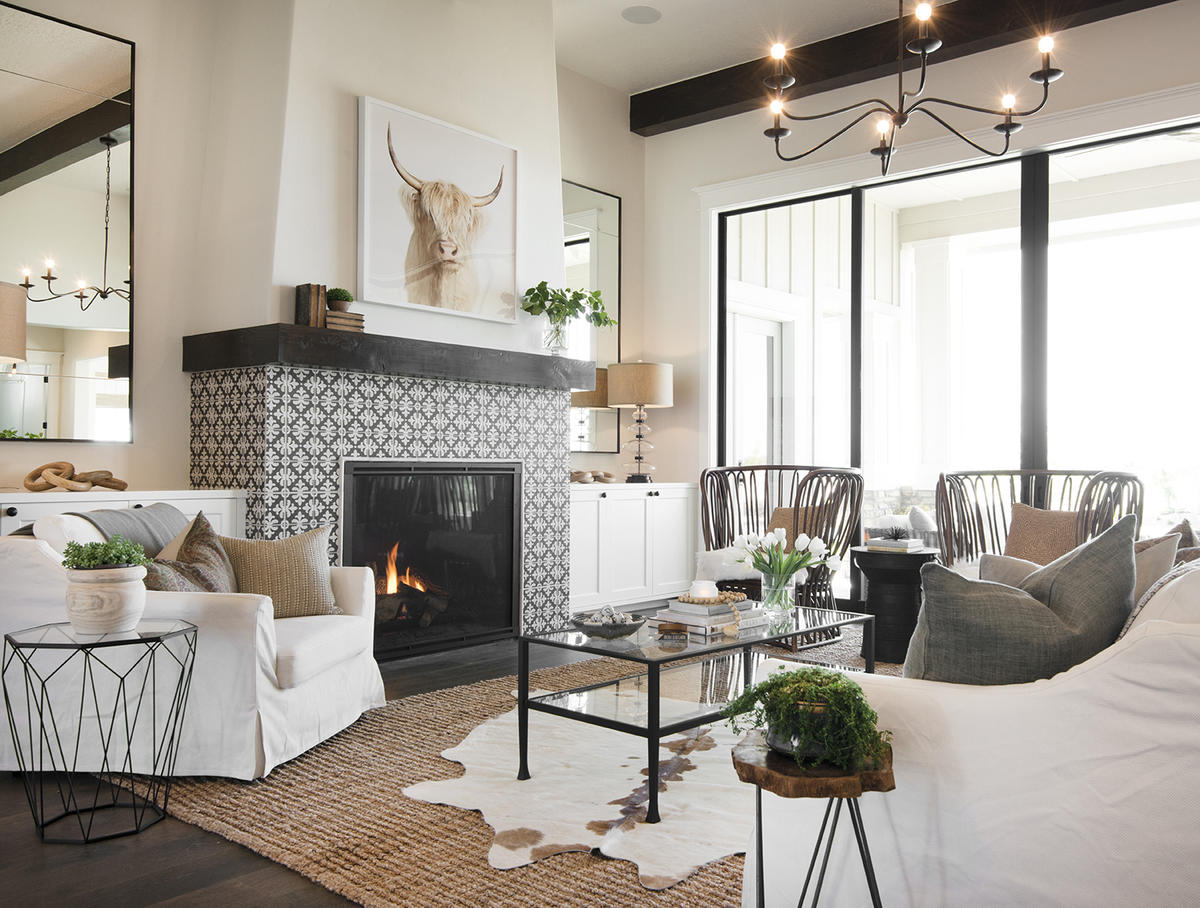
How did you make money in the beginning?
At first, I was doing it for friends and family to start building my portfolio. Then I was like, “I’m going to charge $25 an hour.” So I did that for a minute, and was like, “OK, I’m going to do $50 an hour.” And that seemed crazy to me—absolutely crazy—to charge $50 an hour. And then I hired a bookkeeper, and she was like, “What are you doing? You should be charging $100.”
The bookkeeper probably cost more than your hourly rate was at that point.
Exactly. I’ve always tried to surround myself with people who have the skills that I don’t, because I know that’s going to better me, and she was one of those people. She told me I needed to be charging $100 an hour, but I fought her and I fought her—and then finally I tried it, and clients were like, “OK.” So then she’s like, “You need to be charging $150 an hour.” I said, “That’s crazy. Who is going to spend that?” And again, clients were like, “OK.” Every time I did a price increase, it was so hard for me—so hard for me to believe I was worth that—but people were willing to do it, and the more people were willing to do it, the more I proved to myself that I was worth that. But man, it was hard.
Was there a turning point for you?
I got a call from HGTV, and they wanted to audition me to be on a show a couple of times. I don’t even know how they found me online. I auditioned for Design Star, but did not make it on—but then they called me another time for a different show, [Showhouse Showdown]. I got that show [in 2012], and that really launched my career, because it gave me some street cred. I was an HGTV designer, right? Nobody knew my dirty little secret that I was really just a teacher. Even to this day, as accomplished as I have built my career, I still feel like an imposter half the time. It’s surreal.
I think everybody secretly feels that way. That’s the funny part about this business.
I agree. I’ve got friends who are big players in the design world; they have degrees and all the credentials, they’re published in these major magazines —
And they’re all still making stuff up every day to solve problems, too, I’ll bet.
Yes, yes, a hundred percent. We’re all in the same scenario.
Is asking for what you’re worth still a challenge?
It’s different for me now, because I feel like I’ve put in my time. I’m still always super conscious of other people’s money—I always err on the side against myself and for my clients—but as far as my fees go, I’ve had skin in the game long enough to know that I am worth it. I unapologetically bill for my time, but it’s taken me a long time to get there.
So you’re billing hourly?
It depends. ... I always give my folks a bid and I’m like, “I am projecting it’s going to take this many hours to do these things for you.” But what I end up finding is, because I’m an overthinker and a perfectionist, sometimes it will take me 20 hours to find three stupid throw pillows, and that makes me crazy. I’m not going to charge my clients $150 an hour for my 20 hours to find three throw pillows—that just doesn’t feel right to me—so I end up making $5 an hour in those scenarios. But sometimes I can find a coffee table in 15 minutes because I have one in mind, even though I bid out that it’s going to take me three hours. So it works out in the wash.
I’ve done enough projects now that I kind of know how many hours it’s going to take me to do X, Y and Z. I also read the high-maintenance factor of my clients. If they’re just like, “You do you, sister. I’m happy,” then I can obviously get in and out of there with fewer hours. If they’re going to be a little more needy, then I’m going to have to add on a few hours. I charge a third to begin the process. I charge a third once all the large items are purchased. And then the final third is due to me at the finale of our contractual agreement.
Do clients have a preference between that flat fee and hourly?
I think everybody loves a flat fee because they know exactly what they’re getting into. I can say, “Hey, it’s going to be between $10,000 and $15,000 to do X, Y and Z.” But they kind of want to know, because $5,000 is a big difference for folks. I think they appreciate knowing it’s not going to be a penny more [than the quoted flat fee] unless they alter the contract and add another room or something, and then we just write an addendum for that.

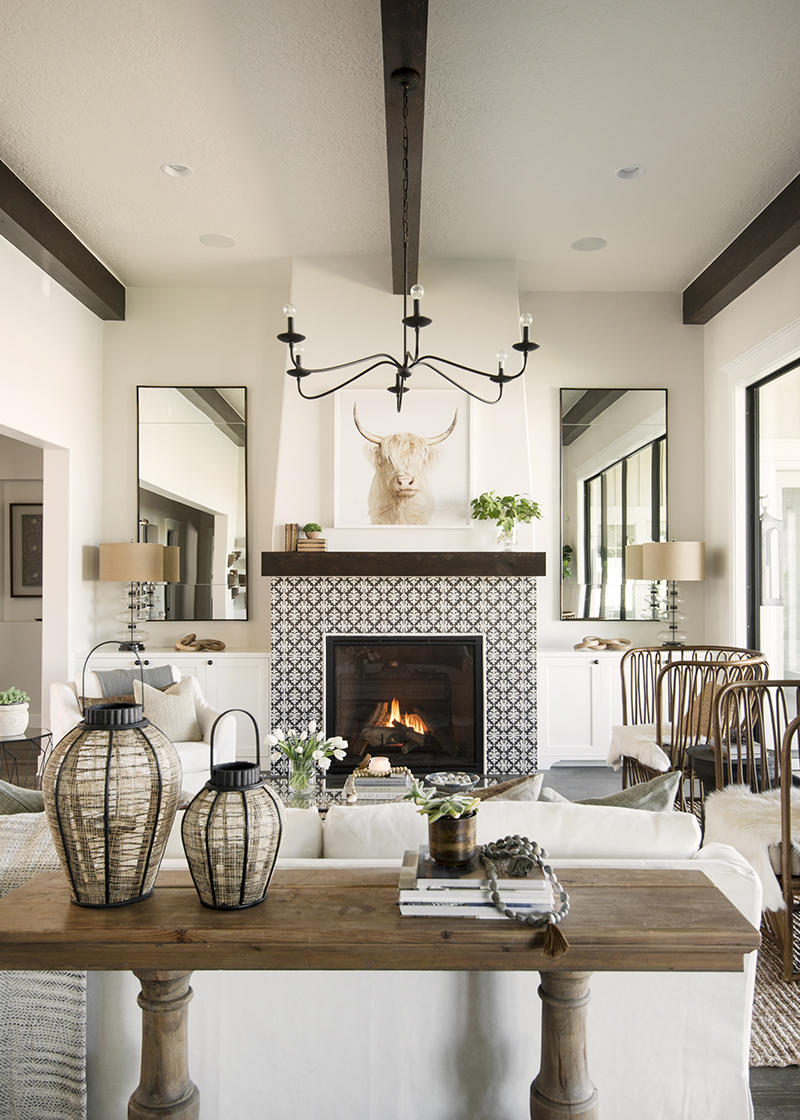
What are you working on at the moment?
I also own two shops, and I’m trying to slow down the design side of my business. It’s been insane, and I’m a solo sailor here.
Have you ever had other designers working for you?
I have hired another lead designer who worked for me, and she was amazing. We would go to a client meeting together, decide who’s the best fit for that person and that style, and then one of us would take the lead. That was great. And then she just hated being in my shadow, which I one hundred percent get, because she’s amazing. And so she decided to go out on her own, which broke my heart completely for several months.
And then I’ve had junior designers who are more back-of-the-house, so I’m always the face that is meeting with the clients. And what I found, even when I had my other gal who is an amazing designer, probably much better than I am, to be honest, but people wanted me. And that was really hard because I couldn’t say, “Yeah, but she’s really great.” And they’re like, “I don’t care. I hired Judith Balis for Judith Balis Interiors. I didn’t hire so-and-so—I want you on this project.”
So now it’s just me. And I’m too big of a control freak, and I found that even having a junior designer, the time that it took me to kind of explain my vision, to say, “Hey, look here, go here,” I was spinning my wheels. I was paying somebody for something I would go back in and tweak anyway.
Right—you end up doing more work instead of less.
It’s tough. I’m slowing [design work] down. I’ve opened up a little shop [called Feather and Twine Home] that I’ve had for two and a half years, and I’m getting ready to open a huge furniture store. So I’m slowing down the design side and the design business will just run strictly out of the furniture store starting this fall.
But [right now], I have three decorating projects. One is a whole house, one is three rooms, and the other is two bedrooms. I’ve got three remodels and two new construction projects.
That’s a lot for a one-designer team.
It is a lot, and as a shop owner of two stores. It’s a little too much, and there are a million people moving to Idaho. I don’t know if you know, but we are one of the fastest-growing communities in the country right now. It’s a madhouse. I find joy in being able to pick and choose who I want to work with and who is truly going to be able to put the trust in me to do my job well. The more micromanaged I feel by somebody, the worse my outcome is, because I’m second-guessing everything instead of just doing what I know intuitively needs to happen.
So, are you turning down a ton of work now?
Yes. I probably get three or four new client inquiries a week. It’s insane.
What makes you say yes to a project?
If it’s something that really aligns with my personal aesthetic, if it excites me, or if it’s some people that I’ve met that I feel really endeared to—even if it’s not necessarily my style, I want to make them happy. And I will take it on for that reason.
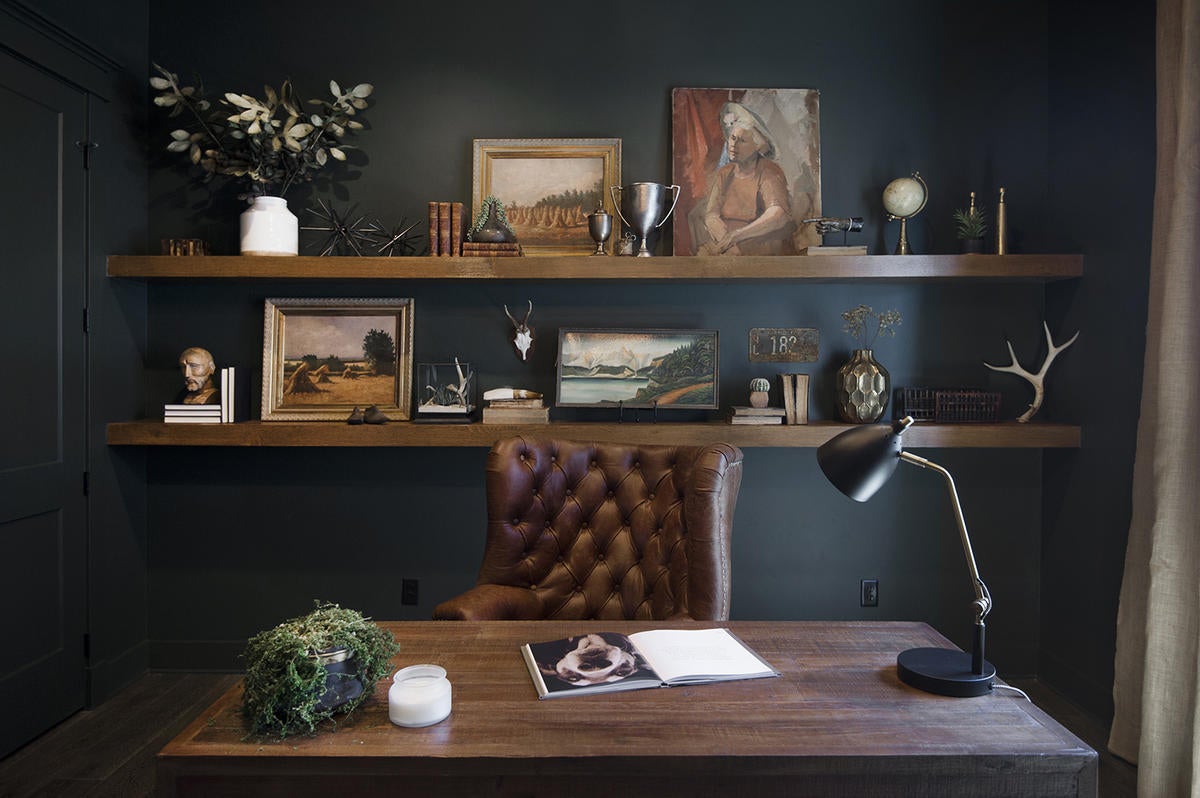
What are your first conversations with a prospective client like?
When people reach out to me, I’ll ask, “How did you find me?” And I’m hoping it was through my portfolio somewhere, because designers are like artists. If you love Picasso’s work, if you like that style of his work, you’re not going to be happy hiring Monet to come make the painting for you. So I always tell people, “Look at my portfolio, and if my style matches with your style—but I want you to go and see 10 other designers’ portfolios until you find one that really hits home for you. And if it’s not me, cool. You’re better off going with that person. If it is me, great. Then we’ll talk.” But I think that’s so important.
I love that approach. It’s helping people find the right fit and not just hoarding business. I think there is sometimes that mindset of, “I have to win the job.”
Maybe back in the day when I was charging $25 an hour and hungry just to build a portfolio, I would kind of whore myself out and take any job, but I don’t have the time or energy for that, and it’s not going to be a good fit, and I’m not going to be happy and my client’s not going to be happy if we’re not aesthetically aligned. I think that’s so important.
What kind of team do you have behind you?
My bookkeeper Mindy has been with me since I very first started out—she’s the one who told me to stop charging $25 an hour. Mindy’s not only my bookkeeper, but she is my business coach. She uses the side of her brain that I just was not born with. And then I have my sweet Brandy, who we call the Commander of Chaos. Managing all the little details of my day-to-day life is difficult for me, and because of the number of inquiries we were getting, I just couldn’t keep up. I wasn’t getting back to people for like a week or so—and that’s just not OK. Even if we don’t take the job, people deserve to be responded to quickly. So when we get a new client intake form via our website, that goes to Brandy and she’ll reach out to the client and get more detail about the project to see if it fits in. She’s the cat herder.
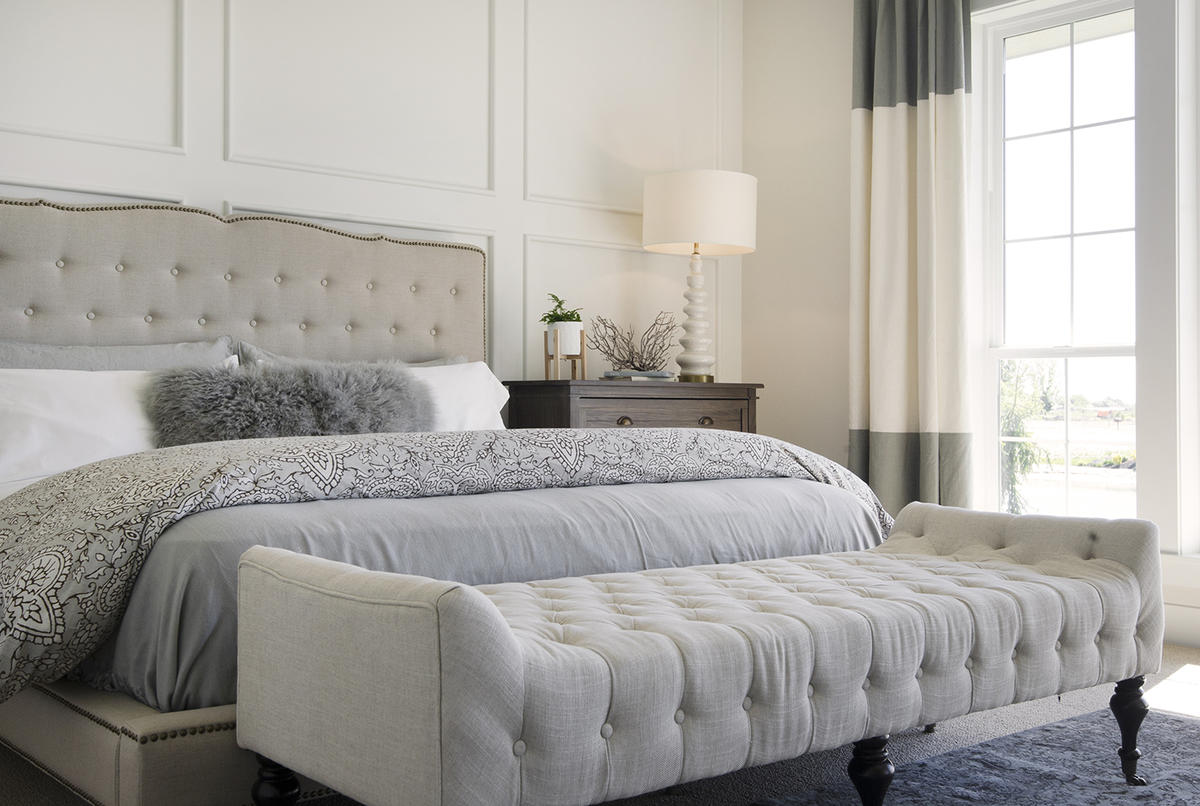
What made you want to add the retail shop, and what makes you want to go even bigger in that direction now?
I’ve always been very entrepreneurial, and opening a shop was just something I knew at some point I had to do, but it didn’t make sense for me to do it until about two and a half years ago. By then, I had finally built enough of a following that I thought people might actually come shop. Plus, I was struggling as a designer to find unique things that I could use for my projects. I like my houses to have soul and tell a story and really look like they’ve been collected over time, and I just couldn’t find what I needed.
I had asked a few store owners about opening a store someday, and every single person was like, “Don’t do it. Retail sucks.” And I was like, “OK, they’re smart, and I need to listen to them.” And then one day I was driving home from our cabin and I saw a sign in front of this little shop on the side of the road. I pulled over, called the landlord and ended up signing on the spot.
Did you really?
It was the sweetest little hole-in-the-wall, and the rent was $500 a month. I couldn’t not do it. I figured, “If I lose $500 a month, I’ll be OK, and I will get it out of my system. I’ll do it for a year, and then I can walk away if nobody comes to my store.” So I ordered all the things, dressed the shelves and made it really cute. I think I really thought that no one would come, and I would just sit in this pretty little shop and look at all my pretty little things. And then I opened my doors, posted it on Instagram, and I had a line out my door and sold out of everything in two days.
Oh, no! But also—that’s amazing!
I had to close because I had no inventory, and I couldn’t get more stuff for three or four more weeks. Instead of being open every day, I decided to just be open on Thursday, Friday and Saturday, every other week. That way I could get new stock in. It seemed really weird at first, and people were kind of mad at me—
Did they come on the wrong Thursday or something?
They would come on the wrong day and didn’t understand my business model. I didn’t understand my business model. It was just something I knew I had to do to keep my sanity while keeping my design business running, having time for my clients, getting inventory, and dedicating my heart and soul to the shop also.
Was it like that every other week when you opened?
It became this weird phenomenon, and within eight months I had completely grown out of my space. And then, magically, the giant space next door, which is more like 2,500 square feet, became available, so I remodeled and moved into that space. It’s just been gangbusters.
I can’t explain the magic that is this little shop. It is so sweet. It’s more than just a store where people come to buy things. It’s become a community. People will come on Saturday, meet their girlfriends or their moms there—they’ll bring their coffee, sit on the couch, hang out and catch up, and then they’ll swivel around and buy a few things. They’re helping each other: “Oh, you should try this with your coffee table.” And it’s this beautiful, amazing magic that happened in that store every other week. The same people come every time I’m open, plus more—they bring more people, and then they bring more people.
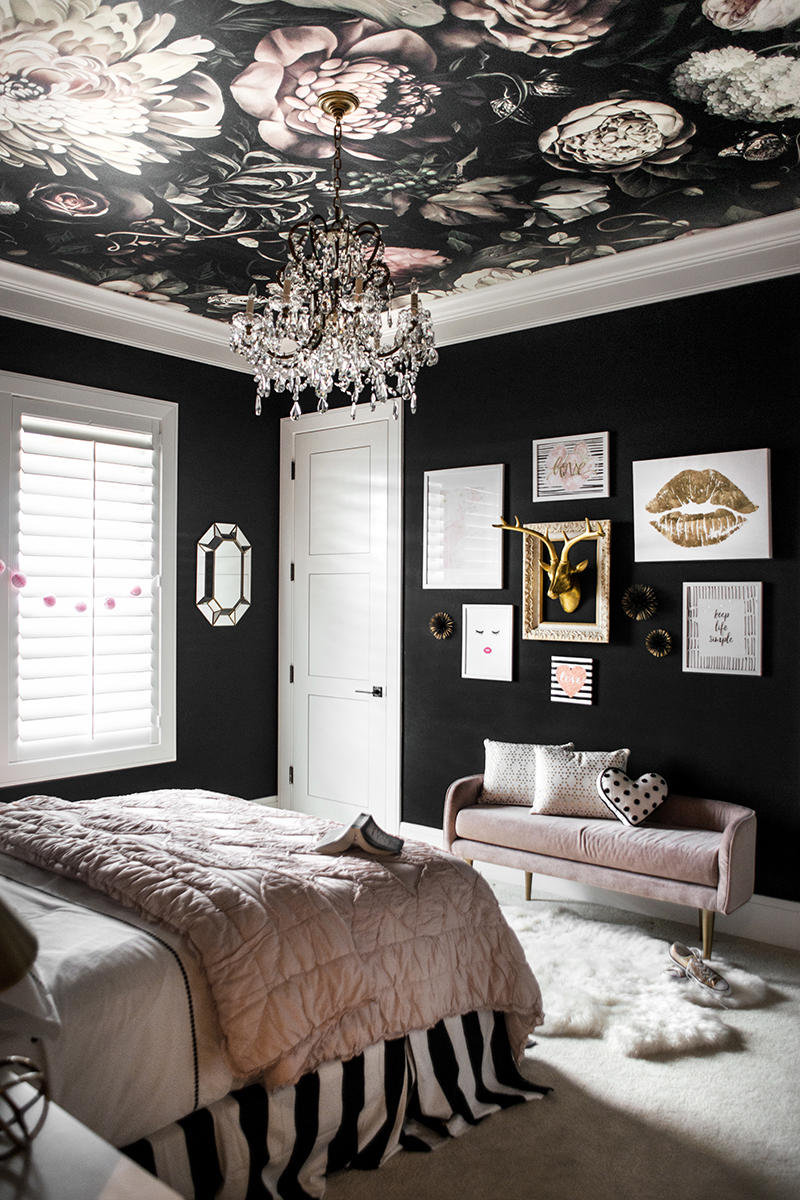
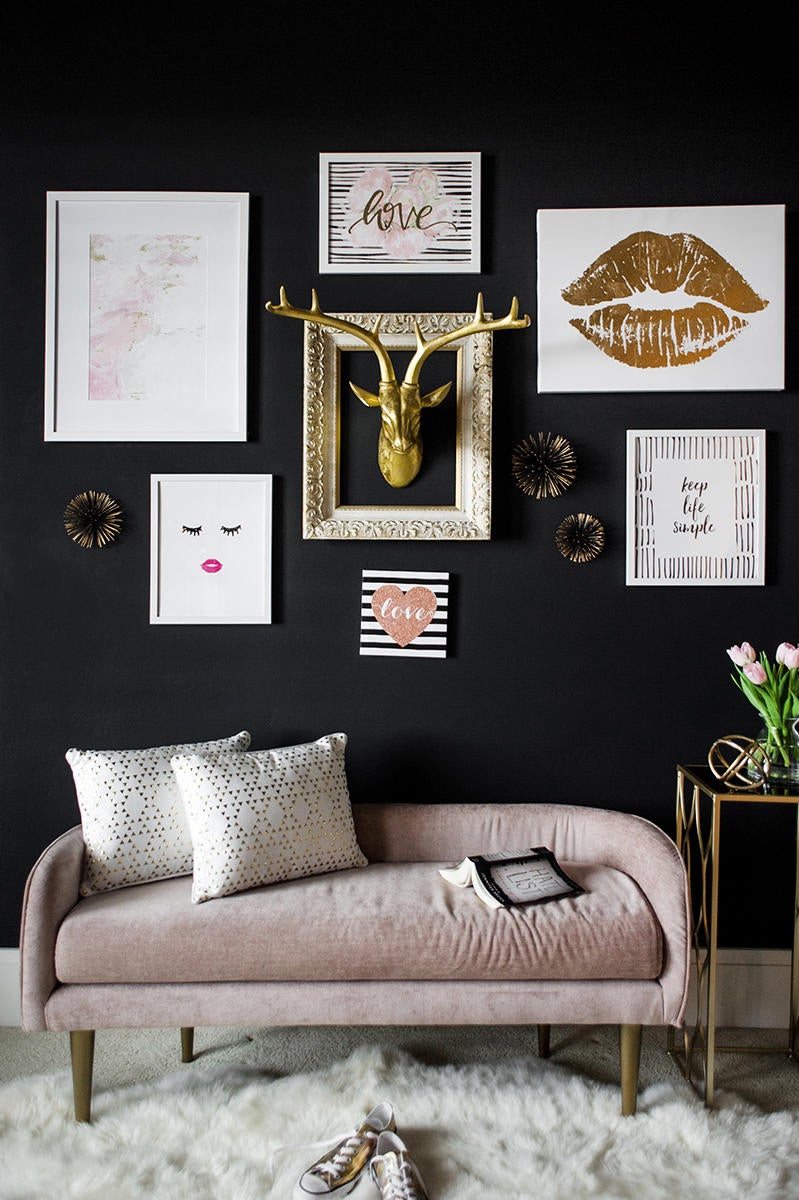
How did COVID impact the shop?
Man, I cried when Boise shut down. There was so much unknown—we didn’t know how dangerous it was, and we didn’t know how long this was going to last. I cried for the longest time. It was this terrible sense of loss and grief and fear. I remember thinking, “What if we can’t come out of this? I pay employees—how are they going to make it? And I have to pay my rent, and I have a store full of furniture and accessories that’s sitting there ... ” I just didn’t know. COVID has been terrible, and we’ve lost so many people that I feel guilty for saying it, but it was such a wonderful pivot point for my shop. I had to dig deep and figure out a new way of doing business.
Did you have e-commerce before COVID?
No, because I didn’t think I could manage it. When we opened our doors for those three days, we would literally sell out and I would have to get all new inventory for the next time that we opened, so I just didn’t think that I would be able to manage inventory if people were buying online—I didn’t think I would have enough stuff in the store for the people who are coming for the experience in-store, and I really want people to come in for the experience. I want to love them up, I want to hug them. So I was not interested in doing online sales at all, and I don’t ship.
COVID forced me to pivot, and I put everything online so people could still shop, but it’s pickup only. I would go to my store all by myself and give shop tours on Instagram. It was like, “I’m going to show you all the pretty things and what to do with them.” And it became this thing—people would watch, and then they would go online and buy everything. We actually did better business during COVID than we had as a regular business. And then I would have days when we do curbside pickup, so you’d just call me and I would bring your bag out to you all masked up and gloved up. We’d let their bags quarantine for two days before you could pick it up—and sometimes we delivered. Whatever it took, we just figured it out somehow.
What’s the retail landscape like in Boise?
Well, we don’t have any fabulous furniture stores. We have one big giant chain store and a couple other smaller stores that are lovely, but their vibe is not my vibe, so I struggle to find things. With the growth happening in Boise right now, everybody is saying, “Where do we shop in this town?” I’m like, “Well, there’s really nothing here.” And then I thought, “What am I doing? Why am I not filling this gap—this need that is so strong right now?” So I’m opening a furniture store.
How did that come together?
I found a space that was 4,000 square feet, but I knew that with the way things were going, I would blow out of that in six months and be stuck with a five-year lease in a too-small space. So my [real estate agent] showed me a space that’s almost 14,000 square feet, and I was like, “Sure, I’ll take it.” I signed on the dotted line and I haven’t slept a night since then because I am so filled with anxiety. I’ve just invested my entire life’s savings in another idea, and I just pray every single day that it works out like the other ones have, that the universe is somehow going to give me back for the love I’m putting out there.

How will the new store be different?
I’m keeping the little shop, because the magic there is so special and something totally different. But it’s small, so I can only bring in a sofa, a couple of chairs and a dining room table. There’s a little bit of furniture, but it’s mostly accessories and one-of-a-kind things. The new store will be all furniture—a 10,000-square-foot showroom, and the rest warehouse, and then we’ll also bring in my special one-of-a-kind accessories in all these beautiful vignettes. You’ll be able to walk in and be like, “I want this,” but it won’t look like you’ve shopped at the big-box furniture store and just taken their vignette, because everything is collected from here and there. It’s really as if I had carte blanche and could just design 50 houses at the same time—that’s essentially what I’m doing.
Do the current supply chain woes have you worried?
I had to close the little shop in early December because we just could not get stock. We had nothing, and nothing was coming. So with the new store, the reason that I jumped on this giant space, as terrifying and expensive as it is, is because I liked the idea of having 3,000 square feet of warehouse on-site. We’re in the construction process and permits are taking forever, so we won’t even be able to open until August. I was hoping to be open by June, but this actually worked out well because it gives me time to custom-order a ton of sofas—to put my orders in for a million things, and because the supply chain is so slow, I think that by the time we’re ready to open, I’ll have stock. I’m hoping I can have a large enough stockpile of beautiful things that people can just come in, buy them off my floor, and we’ll deliver them tomorrow or the next day so that they’re not waiting for six months to get their pretty new furniture.
How will this space capture that same magic of your first shop?
I’m not paying people commission—I’m going to pay them hourly, plus a piece of the pie. A lot of the furniture places hire their people as commission-only, but I don’t want that culture. I don’t want a customer to come in and feel like they are lunch that day. If one gal specializes in our custom upholstery lines and another specializes in decorating shelves and coffee tables, I want that customer to get the full experience and the whole team coming together to help them and do whatever it is to make that customer walk out of there with everything they need to be successful in their homes—to feel loved and respected and heard, and not just someone’s commission sale.

You mentioned the growth in Boise. Big picture, can you tell me a little bit about what’s happening and how that’s impacted your business?
The housing market is out of control. Before COVID hit, you could buy a beautiful 3,000-square-foot home on a pond for $650,000. By the time August hit, that home was $1.2 million. Now, that same house is jumping up to almost $2 million. It’s crazy, and it means that folks who are first-time home buyers here don’t stand a chance in this market. It’s not like our income level is going up. Housing prices are through the roof, and there’s no inventory for housing, which is what’s driving the house prices so high—builders cannot keep up with supply.
That has to be disorienting to watch it happen so quickly.
People are coming in and buying two houses in cash: one to live in and one as rental or investment income. They have California money—they sold their shack in L.A. or wherever for millions, and they have all this money that they have to spend for tax purposes, so they’re buying two houses. People are buying them sight unseen, all cash.
Do people have enough money left over after spending $4 million on two houses to decorate them? Or are they maxing out their budgets on the house itself?
They still have money to decorate them—that’s why I’m opening the new store. Boise tends to be a little frugal, with lower price points and people who like a good bargain. And I’m one of those people, too, by the way—when you grow up poor, you don’t shake that easily. But the folks moving in are used to having these beautiful boutique furniture stores. They want places that are special, where you can get unique pieces that are a little more high-end. And that’s what I’m trying to bring to Boise.
Would you have taken this leap if COVID hadn’t come?
No, absolutely not. I think there’s been a need for a long time, but the output that I am spending per month on this new shop is terrifying, and I would not have risked my family’s savings if I didn’t think we had the market to sustain that, which I now think we do. A year ago, no, but right now, it’s just continuing to grow—and our culture’s changing, and our people are changing, too. They’re used to nice restaurants and beautiful things. Boise’s an amazing place, but we have been lacking in those departments, but people are really stepping up now. Everybody’s on the same let’s-make-it-better bandwagon.
Your firm used to be called Nest Interiors, and your current shop is Feather and Twine. How have you approached marketing and naming and branding in the past—and what’s the name of the new store?
I started out as Nest Interiors because to me, what my job is as a designer is very much like that of a bird going out and collecting bits and pieces here and there, and bringing them back to create comfortable, warm, safe, beautiful spaces for my clients and their loved ones. So just like a bird goes and collects twigs and yarn and feathers and creates this safe little space for their eggs and their babies to hatch and grow, that’s what I feel like our role is. So that’s how we became Nest Interiors. And then another store here locally decided to rebrand as Nest right after my HGTV thing. Her name was Nest Home and I was Nest Interiors, so there was a lot of confusion, but I didn’t have enough recourse for a cease-and-desist.
Is that why you renamed the firm?
I had to completely rebrand at that point, which I fought tooth and nail. I was sad and I was mad—the brand and the name that I had grown, it was all gone. But no one can steal Judith Balis Interiors. That’s me. When I opened the store, I could not call it Nest, for obvious reasons. So I thought about what the nest consists of, because I am now selling the collected pieces that people will take back to build their nest. I was thinking of all the things that a bird would collect to create their beautiful nest, so that’s where Feather and Twine came along.
The new store has nothing to do with birds or feathers or nests. It encompasses the actual home itself on a more broad scale, so it is called Bungalow Home. To me, a bungalow is warm, cozy, comfortable—it’s not stuffy or pretentious. It’s this very loving, warm place to be.
Is there a sense that the furniture store will streamline your design process in some ways?
I’m hoping so. Like I told you earlier, those 50 hours for throw pillows—I’m hoping that I will just have collected enough beautiful things on hand or have access to things on a larger and more accessible scale than what I currently do, and that it will streamline the process tremendously.
Do you find that opening the store is transforming the relationships you have with many of your vendors?
Yes. It’s different. You get better pricing as a brick-and-mortar. You get preferential treatment as a brick-and-mortar, because you’re their bread-and-butter and you’re going to do the numbers for them. It’s a different connection with your reps and your vendors than it is if you’re just a designer running a couple pieces here and there through their shop.
Do you feel like you are positioned to be a major player in your territory for some of these brands that you’re carrying?
One hundred percent. We have exclusivity on one, and there’s only one other shop that carries another of those brands.
What does success look like for you?
That’s an answer that is always evolving for me. Success used to be building my brand and reputation and trust with people. I feel like I have that in place now, so that success needle is moving to a different place. Success to me now is having really wonderful connections with people in the community. Business and money, we have to have them to survive, but if I were to die tomorrow, I would want to die knowing that I have touched people’s lives in a positive way, I have made their lives better; that they could count on me to be a friend and a kind and good person and to always try to do the right thing by them. That, to me, is success.
As far as business success—strictly business? I want both of my shops to always feel like a place that people want to go, that is exciting, that is a wonderful experience. It’s beautiful, the people are kind and welcoming, the customer service is amazing, and they want to do business with us because we feel like a friend. The human connection is truly the most important part for me.
To learn more about Judith Balis, visit her website, find her on Instagram, or check out her shop.
Homepage image: Judith Balis | Pete Grady





























